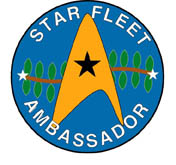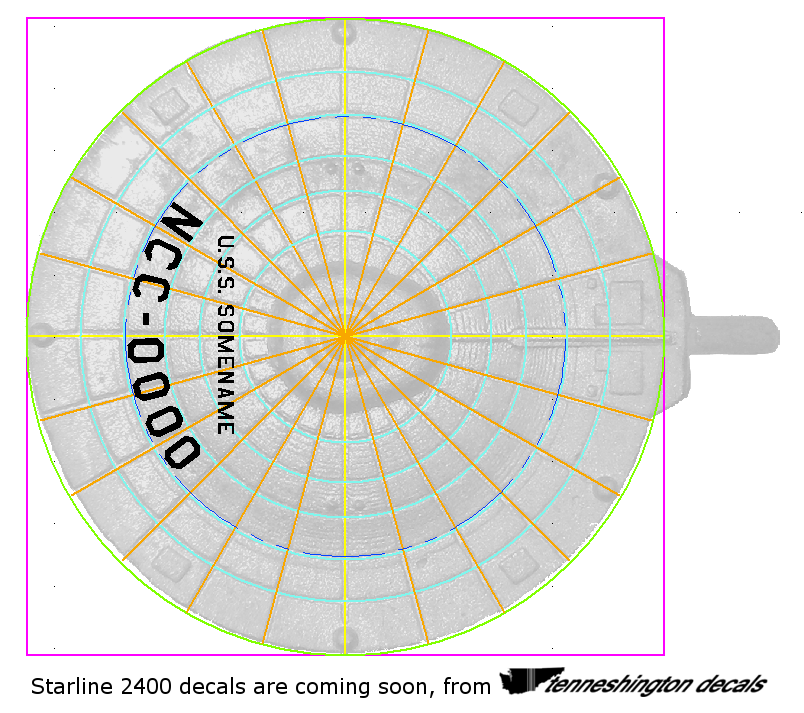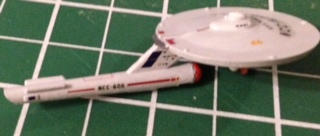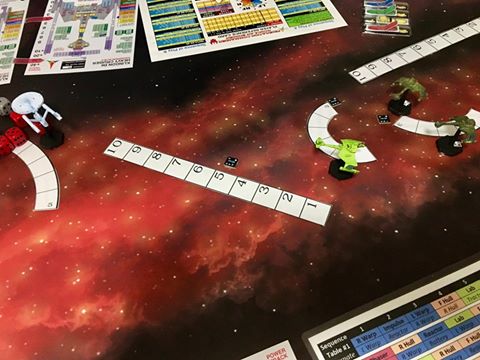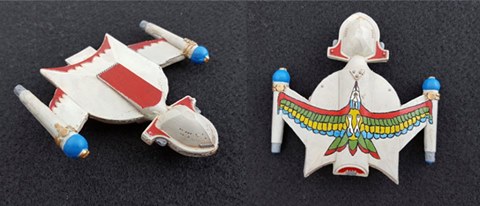
|
||||||||
October 2016
|
||||||||
Star Fleet Universe News BIG NEWS:SFU COLORING BOOK RELEASED
For many years our fans have asked for a collection of line art for use as a coloring book. Now it is available! The drawings range from fairly simple to more complex, so there is something for every skill level. This first book focuses on starships and includes the following:
Federation: Heavy cruiser, Light cruiser, Frigate, War destroyer, Dreadnought, Police cutter, Battlecruiser, Galactic survey cruiser, Strike carrier (with F-15 fighters), and Heavy carrier (with F-14 and A-10 fighters).
Klingon: C8 dreadnought, F5 frigate, D5 war cruiser, D7 battlecruiser, B10 battleship, D6M mauler, D7 in battle (includes drones and explosions!), and T7 battle tug.
Romulan: War Eagle, KR battlecruiser, SparrowHawk light cruiser, FireHawk heavy cruiser, KB10V battleship-carrier (with eight Gladiator-D fighters), ChickenHawk gunboat tender (includes three gunboats), Condor dreadnought, and MegaHawk battleship.
Tholian: Heavy cruiser, War cruiser, Patrol corvette, Three patrol corvettes in a pinwheel, and Battleship.
The book includes a sample ship from each empire showing the "official" colors but you can color your ships any way you want. Since it is a PDF, you can try something and then start over if you don't like it. This coloring book is available as a PDF from the following sources:
Let us know what you think of it.
WEBSITE:
TWITTER: VIDEOS: Star Fleet Marines Part 1 DOING VIDEOS OF THE SFU
A customer asked about posting "tutorial videos" for our games. We like it when people do that (and even give commendation medals) but you need to have us check the videos to make sure you aren't violating something somehow (or that you didn't make a rules error). Doing such videos to make money is not cool. Please drop us an email before you post the videos.
STARBLOG: STAR FLEET'S LEGIONS EXPAND: Each month we shine a spotlight on one of our battle groups.
This month it is Metropolitan Wargamers. This group, homeported in Brooklyn, New York has become interested in playing Federation Commander. Their CO is James Saeli. Do you live in the area? Find out how to contact them here:
Do you have a battle group? Be sure to report your activities here: http://www.starfleetgames.com/battlegroup/report.shtml
Facebook Fan Pages
So join us on Facebook and get a fix of your favorite game there, too!
JAGDPANTHER
Custom Decals for Starline ships Tenneshington Decals continues to provide custom decals for all currently produced Federation Starline 2500 miniatures. For more information or to download the order sheet, check them out at www.tenneshington.com. Or if you prefer, email Will McCammon at: will@tenneshington.com or Tony L. Thomas at: scoutdad@tenneshington.com.
Jupiter IV Decals is a source of decals for the 2400 line and will do custom decals as well as all official SFB names. In the near future Jupiter IV will move into the 2500 line and will work to get every listed name on the Starfleet registry completed in both scales.
Their website is: JupiterIvdecals.com
ONLINE TOURNAMENTS Rated Ace Tournament 46 is moving along. Round three is complete and round four is ready to start. Andy Vancil is the judge for this tournament.
The 2016 Star Fleet Battles World League is entering the semifinals. Team MBA is facing Team KRISSH; Team Beauracratic Haul'n Glass faces Team Contenental Divide+Conquer. Peter Bakija is coordinating this tournament.
The sixth annual Star Fleet Battles Platinum Hat tournament is now underway. All but one of the first-round games have been played. One second-round game has been played. Paul Scott is the judge for this tournament; Steven Petrick is the Tournament Marshal.
DEMOS AND CONS WITH SFU GAMES Star Fleet Battles was played at HURRICON 2016 held on September 22- 25 at the International Palms Resort and Conference Center in Orlando, Florida. Scott Bauman of Battle Group Brevard County hosted the event. In addition Scott reports the battle group plays SFB nearly every Thursday evening.
Star Fleet Battles games are held weekly in Tempe Arizona each Friday at Game Depot from 2:00 -7:00 pm. Eric Phillips is the person to contact.
Star Fleet Battles games are held regularly in Indianapolis, Indiana at Game Paradise. Anthony Harding is the contact person. For more information see: http://www.meetup.com/Star-Fleet-Battles-Indy/.
Star Fleet Battles games are played regularly in Columbus, Ohio, on Sunday afternoons at the Soldiery. Lee Hanna is the contact person.
Games are held in Spokane, Washington on an irregular basis. Contact them to see if there's a game scheduled. They meet at The Gamer's Haven, 2114 N. Pines St., Suites 1 & 2, Spokane Valley, WA 99206, (509) 443-5992 http://www.thegamershaven.net/gamers_haven.php
Download Transmissions HAILING FREQUENCIES: This is our newsletter and will let you know all the news for all our games. You can subscribe here. Have you missed an earlier newsletter? Click here to get caught up! COMMUNIQUE: The latest Communique brings you more Ship Cards, scenarios, and more news from the Star Fleet Universe! It can be downloaded from the Commander's Circle. FC Forum Recent Posts
The Coalition has a number of limited production units that, when joined together, can create formidable heavy cruiser killing groups. These special weapons groups are both available and most useful between Turns #4 and #10 against the Hydrans and then the Federation, and then, again, against the Gorns. During these turns, the Hydrans, Federation, and Gorns lack enough carriers to fill out their combat lines, requiring them instead to deploy heavy cruisers. Although the rapid destruction of Alliance heavy cruisers, command cruisers, and battlecruisers is usually difficult to achieve, the Coalition Special Weapons Group can destroy a few of these units in a single round of battle.
The Special Weapons Group requires the following ships: a Klingon C8, two Klingon stasis ships, a 10-point mauler, a four-point scout, a Klingon D6D, a Klingon D6J, a combat tug with troop pods (or a Klingon D6G), three prime teams, an Admiral, three support echelon drone ships, and as many Lyran battlecruisers and dreadnoughts as are available to fill out the battleline. The objective of the group is to stasis freeze, maul, and then capture or destroy Alliance heavy units outside the formation bonus, while taking a minimum of return fire. The C8 commands a fleet of 10 ships. The Admiral permits one additional ship beyond command limits. Unlike most troop ships, the heavy tug with troop pods contributes eight points of combat potential as well as permits an enhanced capture roll, especially when paired with one of the prime teams. Since a Marine major general cannot be used unless a ground or base target is being assaulted, the specific Marine major general restriction requiring only troop pods on the assaulting ground ship can be ignored for a Coalition Special Weapons Group. As such, one could consider replacing one of the troop pods of the Klingon TGA with either a drone pod (for one additional electronic warfare point and a combat potential reduction) or with a battle pod (increasing the combat potential by two). If a tug is unavailable or its vulnerability undesirable, the Klingon D6G should be substituted, trading a reduction in combat potential (compared with the TGA) for a survivable G factor should the D6G be crippled during battle. The D6J is especially useful in a Special Weapons Group. Because of the presence of stasis ships, it is less likely that the penal ship will be targeted by the Alliance player. Offensively, the penal ship could be used in an honor duel to remove one weaker Alliance ship. But the ideal mission for the D6J in the Special Weapons Group is the Sacrifice Mission which cripples the penal ship but strips eight points off the top of the Alliance's damage. Without the combat potential of his frozen ships and with the heroism of the D6J crew, the Alliance player's final damage numbers may even prove insufficient to kill the stasis ships. While the four-point scout takes its usual place in the protected scout slot, the Klingon D6D goes into the line where it adds two additional scout points while still contributing seven combat potential, better than what most scouts can accomplish. This extra scout in the line is critical to prevent an Alliance negative electronic warfare shift, which can adversely affect the stasis die rolls. (Have another D6D available to add to the line in case the Alliance player has several scouts in the battle hex.) The two remaining prime teams boost the combat potential of the battle force by four points. Crushing killing power is provided by the Lyran heavy units, the Klingon support echelon drone ships, and the mauler. The mauler together with the stasis ships enable the first 10 points of firepower from the battle force to function at one-to-two effective damage. The stasis ships also permit multiple targeting of ships by directed damage. Finally, no damage absorption ships or carriers are necessary, since the enemy fleet will not only be focused on killing the stasis ships but, because of the stasis and the penal ship effects, will find its own combat potential reduced. If push comes to shove, the D6D or the mauler can be voluntarily crippled to absorb additional damage. After the targeted Alliance cruisers are destroyed, the enhanced capture roll (a four or less because of the troop ship and prime team) should be made.
This tactic should be rarely employed against Alliance fleets backed by starbases, because starbases possess not only increased firepower but variable electronic warfare. However, on the Turn #7 Klingon invasion of the Federation, if a Special Weapons Group can be added to any of the main three Coalition invasion forces targeting the Federation Fourth, Third, and/or Seventh Fleet starbases, then it is possible, with care, to use the Special Weapons Group tactic. The Federation at this point is particularly vulnerable because of its lack of carriers, but, to defend his starbases, the Federation player will very likely include his fast dreadnoughts, command cruisers, heavy cruisers, and maybe even battle tugs in the line. Since the Federation player will turn down your offered approach battle, your first target in each starbase battle hex must be the four-point scout. He has only one, so be sure to maximize your damage on this first round in order to kill the fleet protected scout. If you only cripple it, he can use the rapid repair system of the starbase to immediately bring it back online for the next combat round. Once the scout it destroyed, the Klingons will possess an electronic warfare advantage against the Federation, and only by severely reducing the starbase's combat potential will the Federation player be able to equal let alone exceed the Special Weapons Group's electronic warfare. If in the particular starbase battle hex the overall Federation fighter count is low, you might choose to add an additional combat round (before deploying the Special Weapons Group) to direct on Federation fighters and so reduce the combat effectiveness of the starbase. But on the very next round put the Special Weapons Group into operation and try to freeze and destroy as many Federation heavy cruisers as possible. With the loss of the scout, the starbase fighter squadrons, and a few heavy cruisers, the remaining Federation units will have trouble generating enough firepower to prevent your destroying the starbase. After the Federation and Hydrans have had time to deploy carrier groups, the Federation will avoid placing heavy units in such vulnerable places. The Hydrans may remain vulnerable to this tactic because of their penchant for filling the line with powerful heavy and command cruisers. Once the Gorns come into the war, at least one Klingon B10AA is usually available. With two stasis field generators and heavy firepower, this ship (especially when coupled with a C9A in Y175 or a second B10AA if ever constructed) becomes extremely effective as the core unit of the Special Weapons Group. Additionally, the Lyran STL adds two more mauler damage points. It is useful for the Klingons during Turns #10-#12 to deploy a line of mobile bases through Romulan territory to enable strategic movement all the way to the Gorn border. In this way (and with Klingon support of the Lyran STL), the Special Weapons Group can crush the wholly unprotected Gorn heavy units. (The Lyran dreadnoughts can be replaced with Romulan heavy carriers with Firehawk escorts to retain dense firepower.) A Call To Arms: Star Fleet Tactic of the Month INTIMIDATION You could use the "line up" ability (part of a final maneuver at the end of the Movement Phase) to threaten a given ship, even one that has yet to move. Suppose the enemy really wants to keep a cruiser in a particular spot (not moving) for some game reason (within transporter range of a planet, or in a place he can fire between two terrain features at a particular target). If you make a show of moving a ship or two and "lining up" your firing arcs on the enemy ship that doesn't want to move, you are in effect announcing your intention to fire at that ship during the Attack Phase. You might convince your enemy that staying put is a bad career move. (You aren't actually required to fire at this target and could be trying to distract him from noticing what else your ship is in position to shoot at.)
|
||||||||
|
New Releases Communique #130 has been posted to the Commander's Circle Click here to see our previous issues of Hailing Frequencies. Recently Released To be released in 2016
A new Starmada book for both editions.
Federation Commander Reference Starship Book
Traveller Prime Directive Core Rulebook
New starships for the 2500 (1/3125) range including Klingon B10
New starships for the 2400 (1/3788) range including heavy war destroyers and the jumbo freighter.
PDF and EBOOK SALES: RECENTLY RELEASED ON Warehouse 23 "All, Lead, overload disruptors, arm phasers," Killik said. "Fire only when ordered. Repeat, fire only when ordered. We have to hit him with enough to jolt his energy core, which might or might not kill him. Anything more than that is a waste of firepower that we can use for a second jolt."
"The governor is complaining again," Tollek said. "He says you haven't even slowed the Eel like Krelt did." "I told you not to waste my time," Killik snapped, making a mental note to speak to the Army technician later. No doubt, the governor's incessant complaints could be mollified only by a promise to speak to the flotilla commander. "All boats, this is Lead, drop warp packs, raise minimum shields, do not fire until ordered," Killik ordered in plain speech, knowing that his second boat was already at that status. "Five, this is Lead," Killik spoke slowly, keeping his voice level, "on my command fire your disruptor and one phaser. Six, this is Lead, on my command, fire your disruptor but no phasers. Expect counterattack and damage. Five, Six, ready, fire." The energy beams hit the Eel, causing it to writhe in agony, but it still struck back at the two boats. "Energy spike, but no crash," Jorel reported. "Now, it gets interesting," Khurgan said. Chris Proper asks: If I am moving Speed 4 under a wild weasel and announce acceleration to Speed 14, when in Sequence of Play does the wild weasel become voided?
ANSWER: Kommodore Ketrick replies: Under rule (C12.386), "For purposes of wild weasels (J3.0), a ship's Maneuver rate (C2.42) is adjusted at the point where the speed change takes effect in the Sequence of Play, i.e., the Voluntary Movement Stage (6A2)." Matthew Potter asks: What happens when a ship loses lock-on to an unvoided wild weasel, but does not lose lock-on to the ship protected by the weasel? Rule (P2.3224) says that if the aggressor has lost lock-on to the protected ship, then the protected ship cannot void the weasel. What if the roles are reversed and the weasel is the one behind the planet and the protected ship is standing out in the open? Is the wild weasel considered voided for the duration that the aggressor-ship has no lock-on to it? Is the protected ship still protected by the wild weasel with regards to the aggressor-ship? ANSWER: While it is hard to see how a wild weasel behind a planet could protect the launching ship, I have to rule that it somehow does. There is no requirement that a given unit have a lock-on to a wild weasel for its effects to apply to that unit. If there were such a rule, it would introduce many complications. So, if you were to launch seeking units at a unit under wild weasel protection, but there was a planet between you and the wild weasel, the seeking weapons would either lose tracking or acquire the planet (if self-guiding). David Zimdars asks: Suppose a scatter-pack is distracted by an active wild weasel at some point after launch. The wild weasel is destroyed and the explosion period ends prior to the scatter-pack release point nine impulses after launch. The unit that launched the wild weasel did not void the wild weasel (no active fire control or similar actions). When the scatter-pack blossoms in this post-explosion period do the drones track their original target or the wild weasel post-explosion hex? ANSWER: The drones would track the original designated target. You launched the scatter-pack, targeted at the enemy ship, with submunitions set to track the primary target. Then the enemy ship launches a wild weasel. The scatter-pack begins tracking the wild weasel, thinking it is the enemy ship, but its targeting instructions have not actually changed. At the point the scatter-pack releases, the enemy ship has no wild weasel protection for newly launched seeking weapons. The submunitions seek their target per the original targeting instructions. They are treated under (J3.2122), the same as any other seeking weapons that were launched after the explosion period ends. The fact that the scatter-pack is nominally still tracking the wild weasel does not change their target. Follow-up question: If the scatter-pack had been set to track random targets such that the drones would ordinarily track the unit that launched the wild weasel, do they track the intended target or the post-explosion hex?
ANSWER: Any seeking weapons launched after the explosion period ends are not affected by the wild weasel in any way. (End of Admiral Vanaxilth) F&E Q&A
CALL THE COPS! Q: Can a police ship be called up in captured territory as long as the hex in question is in supply from the main grid and was original territory?
A: Note carefully that the hex itself must be in supply before placement of any police ships is done. The placement of all police ships is done simultaneously; one cannot place a police ship to open a wider supply path for another police ship during the same turn.
Q: So you're saying the supply for the target hexes intended to receive POLs have their supply evaluated simultaneously prior to placing all of the POLs in that phase/step? A: This is consistent with a previous ruling on the subject and the SOP. Consider the steps: (105.IW) 1A2 Evaluate Supply Status. (105.IW) 2B3 Call up and place police ships (531.12). There is no chance to reevaluate supply until (105.IW) 3B1. Q: According to rule (531.122) an additional police vessel can be built "counting them against frigate production." Is this "normal' production" (subbing for a production FF) or "any" production [allowing a FF (min) yard to produce the POL as a FF variant]? A: According to rule (450.12) POLs can be substituted for a frigate but only if they are the same hull type as the yard builds. Q: According to rule (531.44) police carriers are allowed to make fighter strikes. Can they perform a fighter strike into a neutral zone hex? A: No ships ever leave your territory, so, yes. (End of F&E Q&A)
ASK AUNT JEAN
Dear Aunt Jean, Would it be possible to use one of the RPG systems to create (in effect) a man-to-man skirmish combat system? A: Certainly. Just create a basic "marine" character and duplicate him a few times. In a fully trained squad (five marines), every member is trained to use every weapon, so the skills would be the same although the sergeant might have an extra point or two of leadership. If you create an officer character by the system's rules, you can use him, a few squads, and an extra sergeant to form larger units. You could even create a basic "prime team" although "skirmish" systems are more about combat than the kind of puzzle solving Primes are assigned to do. Get a few minis or counters and use a hex map (make up your own terrain or use the maps from Star Fleet Marines).
Send questions to Jean at marketing@StarFleetGames.com and she will answer as soon as she can.
(End of Ask Aunt Jean ) Cool Stuff on the Website In this section we will provide links to various web pages and items that we think you will find "cool". We have also uploaded new Xander wallpapers to our Wallpapers section on the website: Wallpapers STAR FLEET ALERTS These are the press releases we send to the wholesalers, retailers, and media. You can get on the mailing list for them by asking Marketing@StarFleetGames.com to add you to the list. (Obviously, they are free.) They are uploaded to the Star Fleet Alert page FC Tactic of the MonthA BRIEF LOOK AT SUICIDE SHUTTLES Suicide shuttles present an interesting tactic. To be useful, the suicide shuttle must pose a credible threat.
Once it poses a threat, it has multiple uses. Suicide shuttles can be used to influence an opponent's movement to your advantage, or they can be used to simply absorb the enemy's firepower. Any resources used against the shuttles will not be available for use against your ships. If your enemy has the resources available, suicide shuttles are not impossible to deal with. Suicide shuttles can be shot down, or grabbed by a tractor beam. They move at speed 8, so they are easily outrun by most ships. If at a baseline speed of zero or 8, accelerating at key moments may buy time. One other limitation is that a ship can only launch one shuttle per impulse. Let's look at what makes a good target for a suicide shuttle. Here are a few possibilities; no doubt there are others. 1. An enemy coming at you, usually chasing you, but coming at you from the front is possible if you are going slowly enough (so the suicide shuttle can get ahead of you). The point is that speed doesn't matter if the enemy is getting closer anyway. 2. An enemy that has broken down or performed emergency deceleration. 3. An enemy held or slowed down by a tractor beam. This is probably a difficult maneuver to pull off, but not necessarily impossible. While this is a whole other tactics paper, one point is that this is yet another reason you don't want to be (or stay) tractored. 4. My favorite is the wounded vessel that cannot get away. Crippled vessels can be a nuisance with their one or two surviving weapons plinking away at long range. Plus, they are a hazard to navigation and must be destroyed! 5. In a multi-ship engagement, launch suicide shuttles at a stationary or slow-moving cripple. If the enemy does not detach forces to help the cripple, you'll kill it. If he detaches forces from the main battle group to chase down shuttles, you will have weakened his main group even further. 6. Enemy ships that have fired all of their phasers, or have no power remaining to shoot or tractor a shuttle. Sometimes it's worth waiting until he has expended his weapons, then get in some extra damage with a suicide shuttle. Power remaining will be the great limiter in this instance. 7. Bases and (in certain scenarios) key freighters. Next, how big of a warhead should you use? An 18-point suicide shuttle launched at you is a threat that must be dealt with. But what about multiple suicide shuttles? What if, instead of one 18-point shuttle chasing you, there were two shuttles with 9-point warheads, or three 6-point warhead shuttles, etc. Multiple shuttles (possibly launched by multiple ships) would make for a more complex problem. If you include a few drones in the mix, the problem gets bigger. A shuttle with a three-point warhead might not be considered worth the firepower required to shoot it down. One point of power would be used to cause three damage points, and you won't have used up a weapon mount. Not a bad exchange. To shoot it down will require two phaser-3s and one point of power, but that represents 6-8 points of damage that won't be striking you.
Experience will dictate how useful suicide shuttles become, and the best ways to use them. In the fleet scale, they will require a significant amount of firepower to destroy when compared to the squadron scale, but there will be half as many. These are just some initial ideas and are at least worth trying in the right situation. The only real test is combat.
While the Andromedans can beam satellite ships directly to planets [rule (G19.416) explicitly says so], they can also be beamed directly into the atmosphere/low orbit over a planet and immediately begin low-atmospheric flight [rules (P2.4112) and (P2.80)] by going Speed 1.
Doing this will allow any satellite ships to fire at any ground base which is on the hexside where they are flying (possibly after any such ground base fired on the mothership at Range 5). While tractor-repulsor beams add five hexes to their range under (P2.544) and maulers to lose 25% of their damage, phasers only add one to their die roll. This allows a Cobra/Viper with four phaser-2s to deal 20-24 points of damage on average with its phasers alone. This is enough to damage a ground base, but probably not enough to destroy it. It is enough, however, to drop a shield and allow a hit-and-run raid against any heavy weapon. A Terminator/Asp can use its mauler and definitely destroy a ground base (every time it can fire while power is available) because they can choose the damage output of the mauler. Deploying to flying/low-orbit allows any satellite ship to be protected from ground bases on hexsides adjacent to your target, and also gains the atmosphere effects for any enemy ship firing at it. When all of the ground bases are destroyed on your target hexside you can then fly to the adjacent hexsides and start over or be picked up by your mothership to be repaired. (End of SFB Tactic of the Month)
Throughout the month our graphics director places on the website various cards called Demotivationals. These are like postcards with an image and a phrase that is often used for humor. Here are the newest demotivationals since our last newsletter: To see our previous Demotivationals click here. Facebook Highlight of the Month
Mini of the Month Mark Notestine painted this Starline 2500 Romulan Condor.
|
||||||||
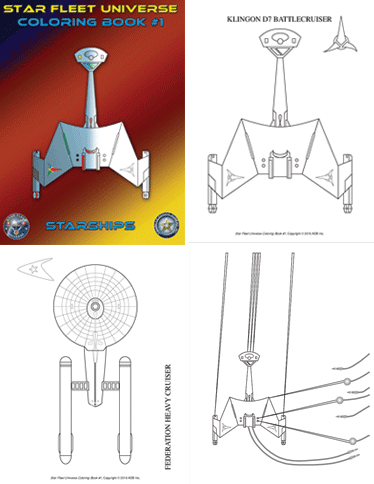
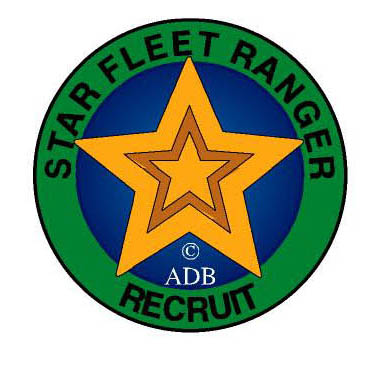 show our games and to teach potential players some basics.
show our games and to teach potential players some basics. 